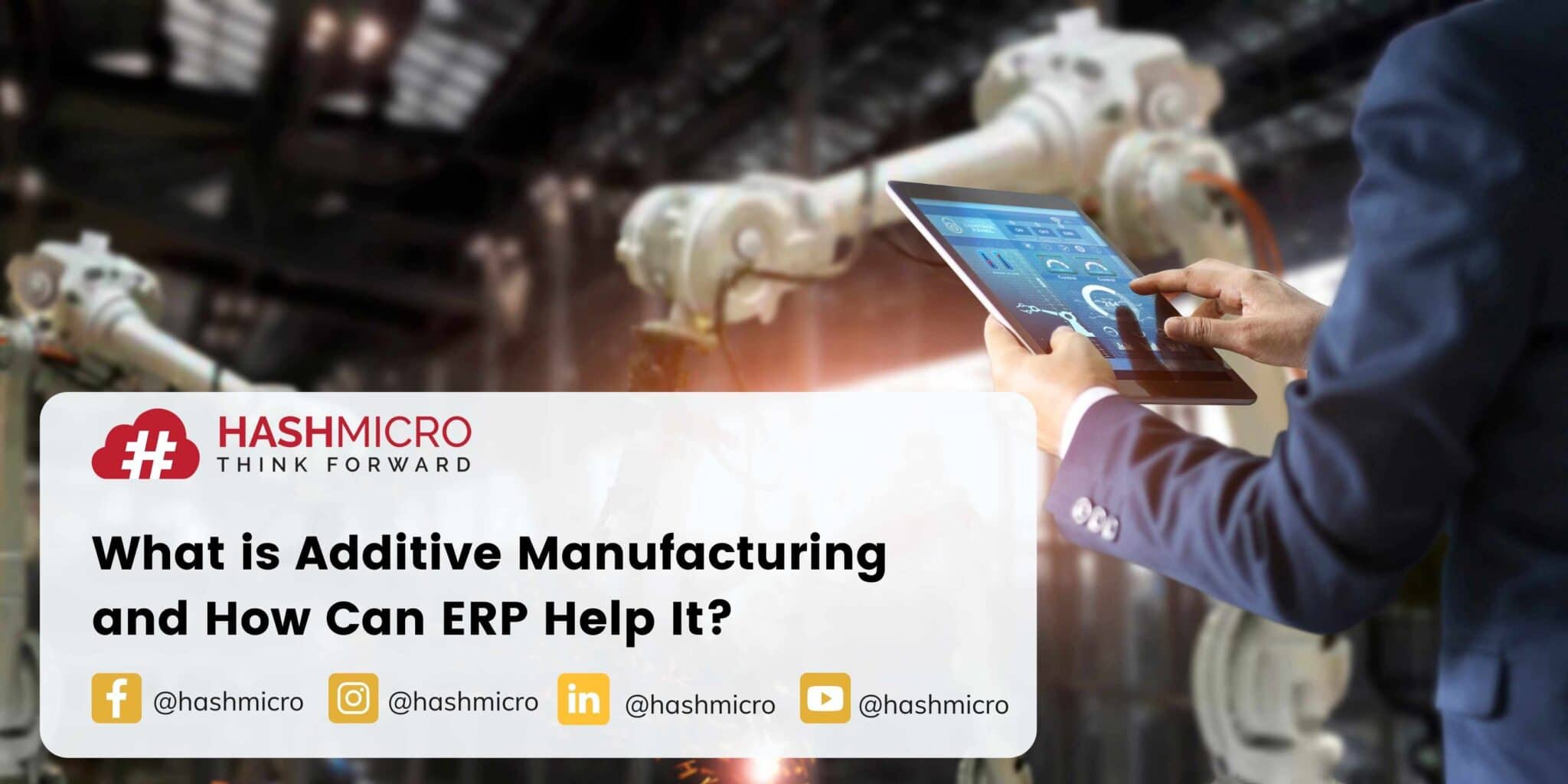When I first heard the term additive manufacturing, I was surprised to learn it’s the same technology as 3D printing. Even more fascinating is that it has been around for over three decades, quietly transforming the manufacturing industry.
Over time, I realized that additive manufacturing isn’t just about printing objects; it allows companies to create complex designs, reduce waste, and speed up production in ways traditional methods can’t match.
If you want to see how this innovation can be implemented effectively, ERP systems play a key role. Learn more about how ERP supports additive manufacturing with the leading manufacturing automation software provider.
Key Takeaways
|
What is Additive Manufacturing?
The truth speaks, what we call additive manufacturing does not apply to additive manufacturing 3D printing only, but also rapid prototyping and direct digital manufacturing (DDM). This technology advancement has been well-received and is still continually going to surprise the manufacturing industry with its development.
Also read: How Does Smart Manufacturing Technology Benefit Industrial Investors
How Does It Work and What are the Processes?
Additive manufacturing, commonly known as 3D printing manufacturing, works very differently from traditional manufacturing. Instead of cutting or carving raw materials, it builds objects layer by layer using precise computer guidance. Here’s how the process works:
- Layer-by-layer production: Unlike traditional manufacturing that removes material, additive manufacturing builds objects by adding thousands of tiny layers.
- Computer-guided process: A computer and specialized software guide the printer, defining the exact shape and structure of the object.
- Material flexibility: The printer uses cartridges that can be loaded with various materials depending on the desired object.
- Fusion of layers: Each layer is fused during the printing process to create a solid and accurate final product.
- Replaces traditional methods: Instead of carving or cutting from raw material, the object is constructed from the ground up, reducing waste and enabling complex designs.
Also read: Lean Manufacturing Implementation in 6 Steps
Benefits of Additive Manufacturing
In practice, implementing an ERP system provides significant benefits for additive manufacturing. It helps streamline production planning, monitor material usage, and reduce waste.
Here are the other key benefits of ERP in additive manufacturing:
- Production planning and scheduling: ERP systems help plan and schedule additive manufacturing processes, ensuring efficient resource allocation and timely production.
- Inventory management: They enable better tracking and management of raw materials, including powders and other consumables, reducing waste and optimizing inventory levels.
- Quality control and traceability: ERP systems provide real-time visibility into quality checks and maintain detailed safety records for each 3D-printed item, crucial for regulated industries like aerospace.
- Cost visibility: Manufacturers gain enhanced insights into production costs, including material usage, labor, and overhead, which supports better decision-making and cost reduction strategies.
- Data analytics and insights: ERP systems collect and analyze vast amounts of data, providing actionable insights to improve efficiency, identify trends, and inform business growth strategies.
Types of Additive Manufacturing Processes
There are seven types of additive manufacturing processes that you should know. Each process uses different methods and materials to create objects layer by layer. Here are the seven types with explanations:
- Directed Energy Deposition (DED): Uses lasers, electron beams, or electric arcs to melt wire, filament, or powder layer by layer, building up metals, ceramics, or polymers.
- Material extrusion: Heated polymer filaments are extruded through a nozzle to form layers, with vertical and horizontal movement creating the final object.
- Vat polymerization: Liquid photopolymer resin is cured layer by layer using ultraviolet light to form precise, solid shapes.
- Binder jetting: A printing head deposits layers of powder alternated with a liquid binder, fusing the material into a solid structure.
- Powder bed fusion: Techniques like SLM, DMLS, and EBM melt or sinter fine powder layers using lasers or electron beams, then remove excess material to form accurate parts.
- Sheet lamination: Methods such as LOM and UAM stack and bond sheets of paper, plastic, or metal, using adhesives or ultrasonic welding for versatile designs.
- Wire Arc Additive Manufacturing (DED-Arc): Arc welding and robotic manipulators deposit wire along predefined paths, constructing large-scale metal parts layer by layer.
How Can ERP Help Additive Manufacturing?

An effective ERP system is a key that can help companies keep up with this innovation. The ERP system will help you keep track of how much material is needed for additive manufacturing production.
ERP data management can track your product starting from the raw material, its shipping and delivery, and the effectiveness of the entire process with just a fingertip. The solution of an ERP system also functions to predict how the demand is going to be in the future.
Next, because additive manufacturing technologies are relatively new, making sure the 3D printer runs well is a routine that you must not miss. Implementing an ERP system can facilitate this process by integrating machine data and maintenance schedules.
Additive manufacturing is a combination of manufacturing and technology. The ERP system can provide applications that connect discrete manufacturing and process manufacturing. Discrete manufacturing is the process of creating an object with existing components.
Meanwhile, process manufacturing uses a mixture of chemicals to make a new product. With 3D printing, your company can execute both forms of manufacturing. However, you will need an ERP system to handle them.
Here is a table summary about the role of ERP in additive manufacturing that helps you to easily understand
| Aspects | Role of ERP in Additive Manufacturing |
|---|---|
| Material Management | Tracks required materials for production and monitors inventory levels. |
| Product Lifecycle Tracking | Monitors raw materials, shipping, delivery, and overall production efficiency. |
| Demand Forecasting | Predicts future demand to plan production effectively. |
| Machine Management | Tracks 3D printer serial numbers, ensuring proper maintenance and origin identification. |
| Manufacturing Types | Supports both discrete manufacturing (assembling components) and process manufacturing (using chemical mixtures). |
| Integration of Technology | Connects additive manufacturing processes with broader ERP modules for seamless operation. |
Streamline Your Additive Manufacturing with HashMicro’s Manufacturing Software

HashMicro’s Manufacturing Software is an all-in-one solution for companies in Singapore looking to manage additive manufacturing and production processes more efficiently while boosting operational performance.
With an intuitive interface and AI integration, HashMicro’s software helps teams manage production planning, monitor workflows, and generate reports, all seamlessly connected to other ERP modules such as accounting, procurement, and inventory management.
Beyond core functions like production scheduling, resource forecasting, and performance analysis, HashMicro offers advanced features designed to enhance efficiency and decision-making, including:
- Real-Time Tracking: Monitor production activities and machine usage to ensure accurate reporting.
- Mobile Access: Manage production data and monitor processes on the go via Android & iOS apps.
- KPI Monitoring: Set operational targets and track team performance effectively.
- Data Integration: Connect data from multiple digital platforms to support data-driven manufacturing strategies.
- Production Insights: Compare planned vs. actual production to evaluate efficiency.
- Top Product Analysis: Identify high-performing products to optimize production planning and inventory management.
Conclusion
Additive manufacturing in Industry 4.0 is a new technological breakthrough in the manufacturing industry that adds more convenience in producing goods. Its benefits also go beyond traditional marketing.
However, to operate it, the ERP system holds the key. HashMicro, as the best ERP software service provider in Singapore, provides manufacturing automation software that you can use in implementing additive manufacturing.
Are you in the manufacturing industry and would like to know more about ERP? Read the following article: What is Manufacturing Software & How It Can Help Your Business Grow? or you can try a free demo today.

Frequently Asked Questions
-
What is additive manufacturing?
Additive manufacturing, also known as 3D printing, is a process of creating objects by layering material based on digital designs.
-
What materials can be used in additive manufacturing?
It can use a variety of materials, including plastics, metals, ceramics, and composites, depending on the technology and application.
-
What are the main benefits of additive manufacturing?
It allows for rapid prototyping, complex geometries, reduced material waste, and faster production compared to traditional manufacturing methods.














